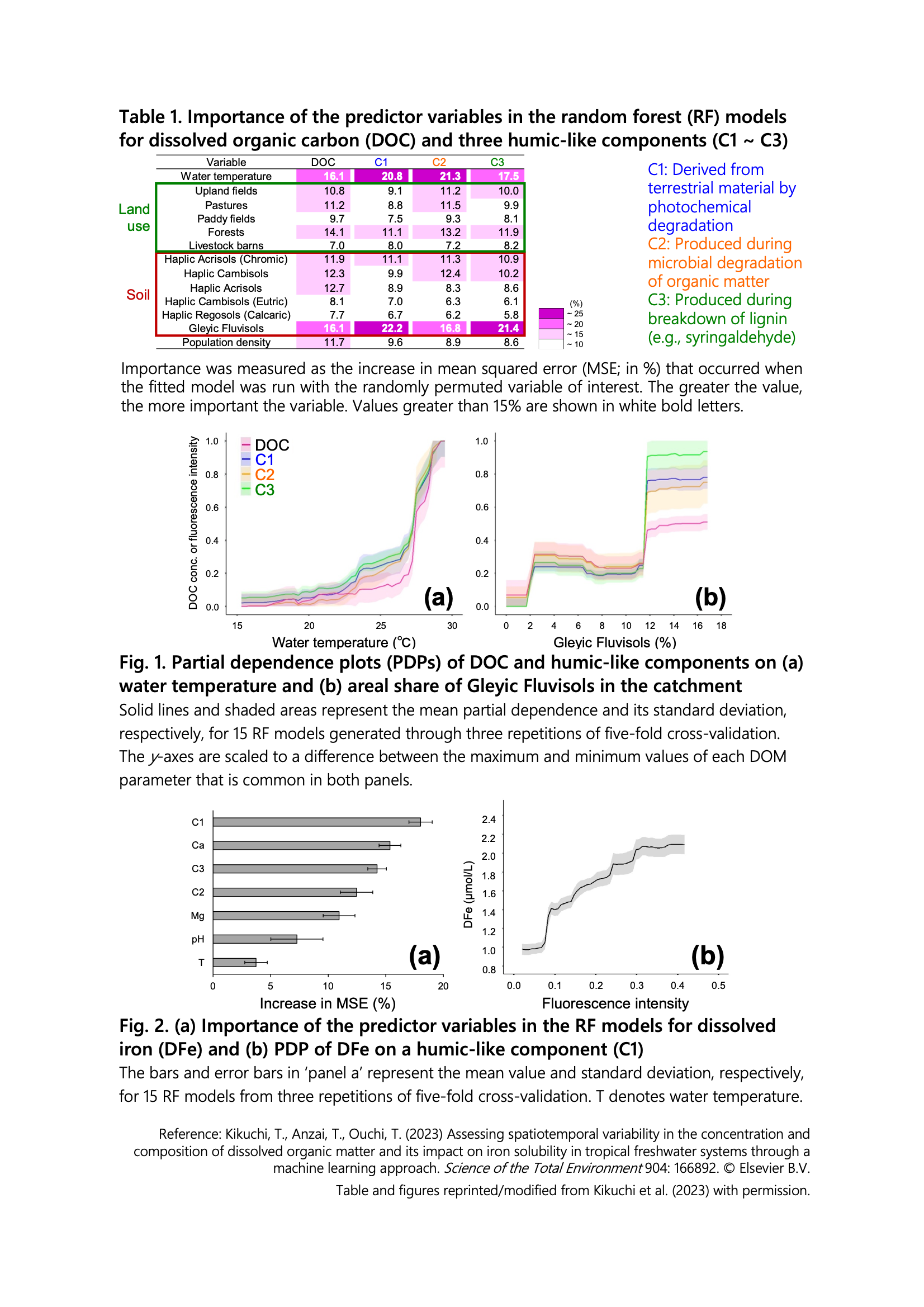Unraveling the factors influencing spatiotemporal variations in riverine dissolved organic matter and iron through a machine learning approach
Related Research Project
Yama-Sato-Umi agroecosystem connectivity
Description
Dissolved organic matter (DOM) serves vital functions in aquatic ecosystems, such as regulating light availability in the water column and providing energy and nutrients to microorganisms, while excessive loading of light-absorbing colored DOM reduces light penetration, inhibiting photosynthesis by primary producers (e.g., phytoplankton, seaweeds). DOM also serves as an organic ligand for iron, an essential micronutrient for primary producers, and increases its availability. Based on the result of periodic water quality monitoring in the rivers of Ishigaki Island, a tropical island of Japan, the factors influencing spatiotemporal variations in the concentrations of riverine DOM and its components were identified by analyzing their relationships with catchment properties (e.g., land use, soil type) and seasonality (e.g., water temperature). Furthermore, the impact of the molecular composition of DOM on the concentration of dissolved iron (DFe) was assessed. The random forest (RF) machine learning algorithm was employed for the analyses because of its flexibility in handling non-parametric datasets and non-linear relationships, and its ability to measure the importance of predictor variables.The RF models using catchment properties and water temperature as predictor variables accurately predicted the concentration of dissolved organic carbon (DOC) and the abundance of three humic-like components (C1 ~ C3) identified by fluorescence excitation-emission matrix coupled with parallel factor analysis (EEM-PARAFAC). Water temperature and areal share of poorly-drained lowland soil (Gleyic Fluvisols) were identified as the most important predictor variables for DOC and the humic-like components (Table 1) and positively influenced these DOM parameters (Fig. 1). This result indicates that the concentrations of DOC and humic-like components exhibit clear seasonal variations with their maxima in summer and that the poorly-drained lowland soil serves as the major source of riverine DOM (particularly humic-like components) in the studied catchments. The RF model for DFe using the abundance of EEM-PARAFAC components and other parameters relevant to iron solubility (e.g., water temperature, pH, concentrations of Ca2+ and Mg2+) as predictor variables also explained a large portion of the variation in DFe concentration. A humic-like component derived from terrestrial material (C1) was the most important predictor variable and had a positive relation to DFe concentration (Fig. 2), emphasizing its significance as an organic ligand for iron.
The results obtained in this study improve our understanding of the spatiotemporal variability of terrestrial DOM and iron loadings and their impacts on tropical coastal ecosystems of high ecological and economic importance.
Figure, table
- Research project
- Program name
- Term of research
-
FY2020-2023
- Responsible researcher
-
Kikuchi Tetsuro ( Crop, Livestock and Environment Division )
KAKEN Researcher No.: 50453965Anzai Toshihiko ( Tropical Agriculture Research Front )
- ほか
- Publication, etc.
-
Kikuchi et al. (2023) Sci. Total Environ. 904: 166892.https://doi.org/10.1016/j.scitotenv.2023.166892
- Japanese PDF
-
2023_A08_ja.pdf620.79 KB
- English PDF
-
2023_A08_en.pdf281.75 KB
* Affiliation at the time of implementation of the study.

